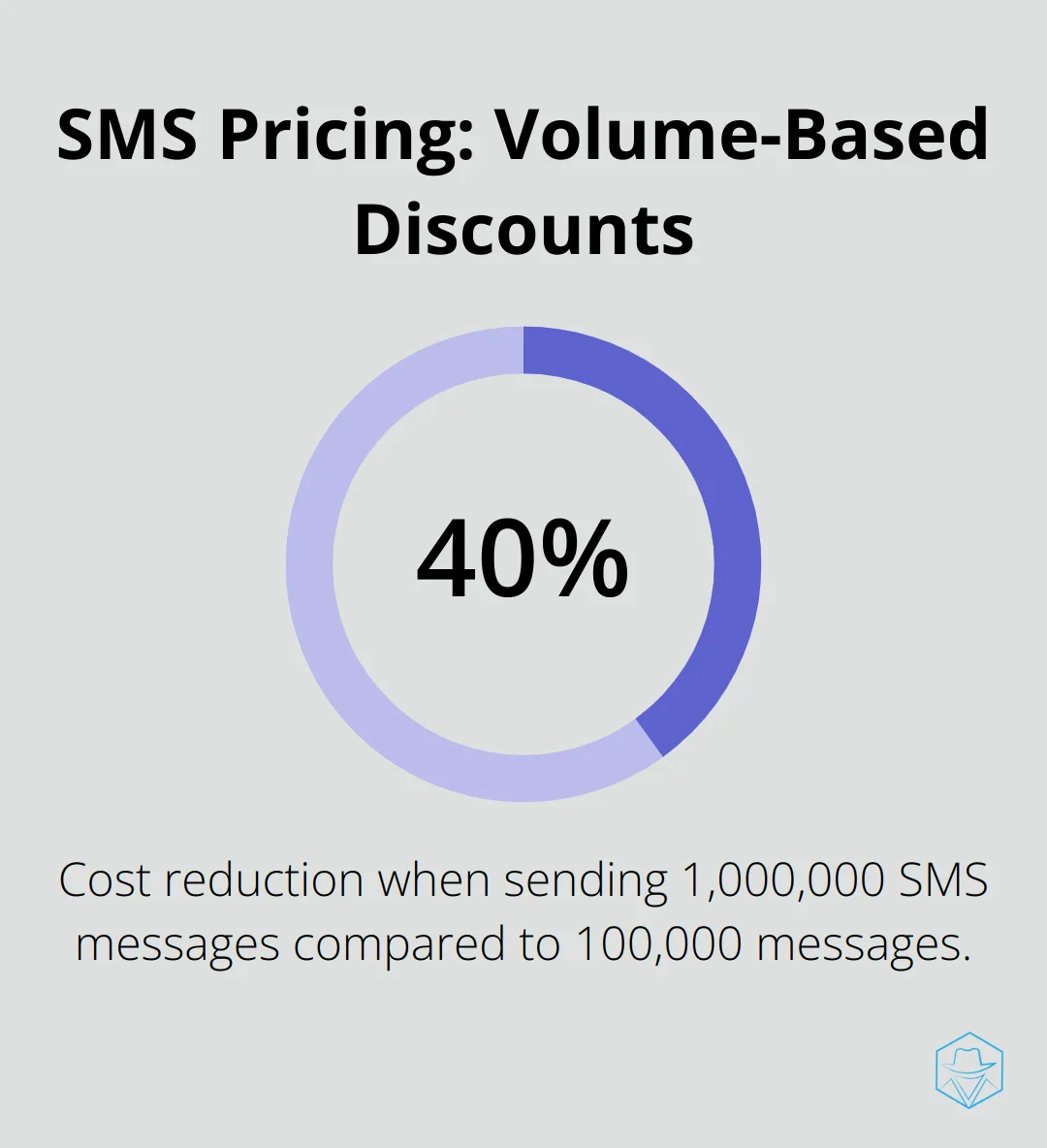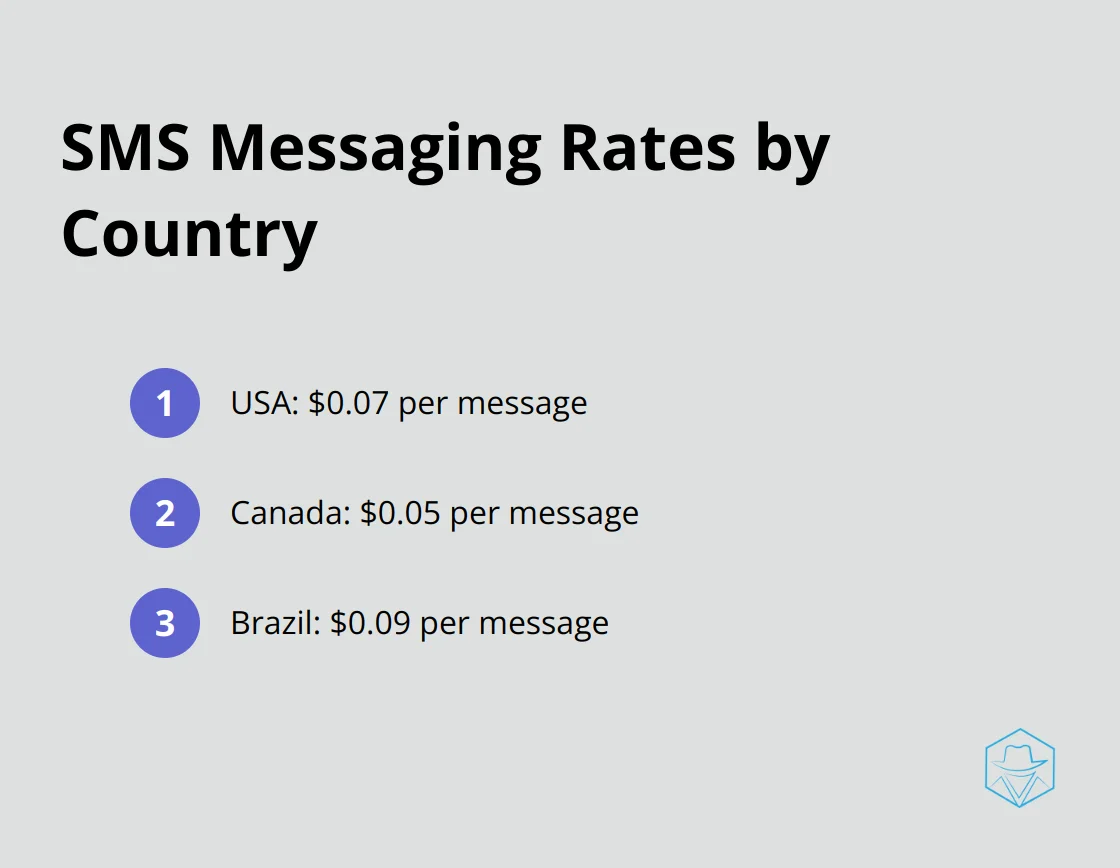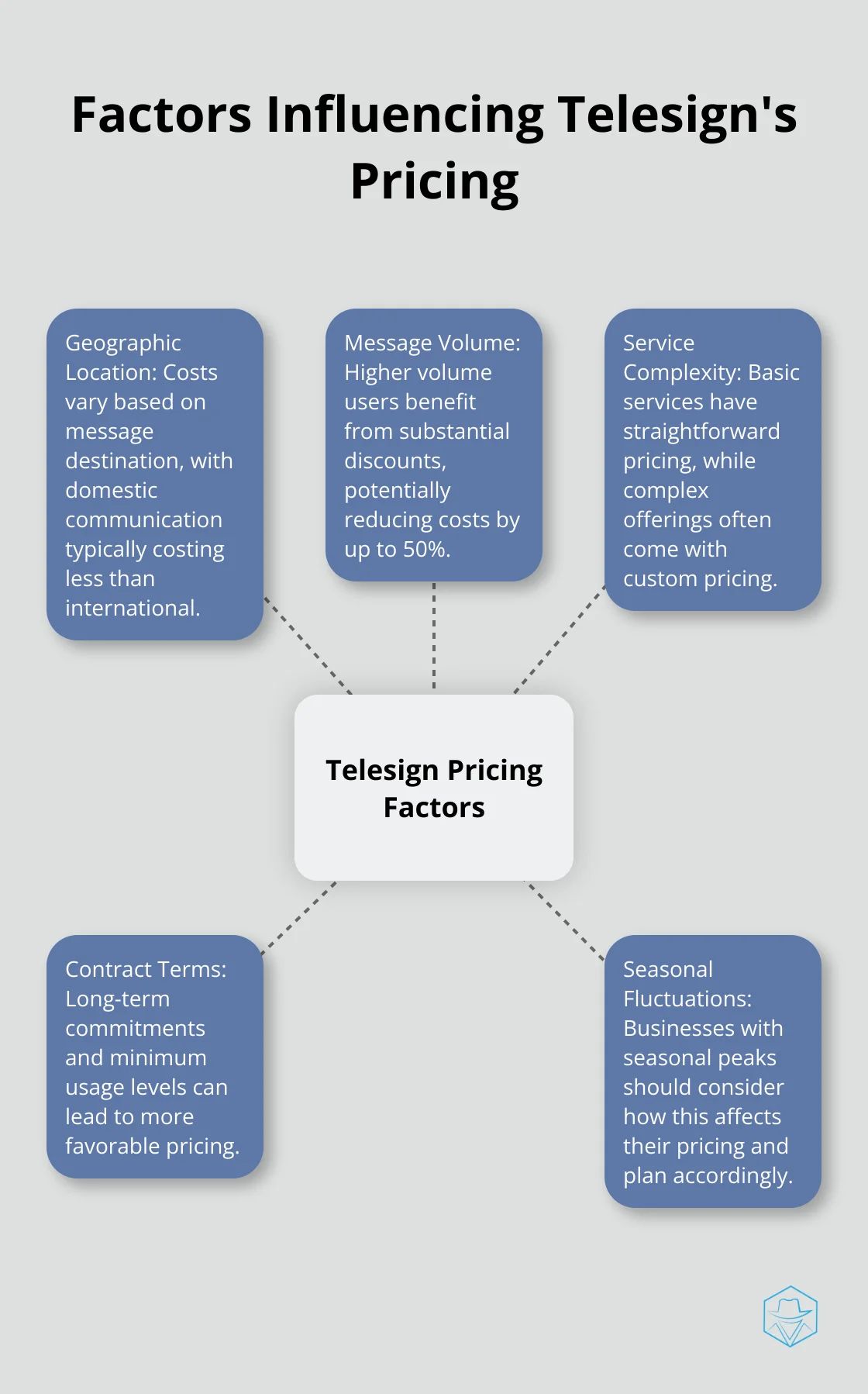Understanding Telesign Pricing for Businesses

At Drop Cowboy, we understand the importance of clear pricing for businesses looking to integrate communication services. Telesign, a leading provider in this space, offers a range of pricing options that can be tailored to different needs and budgets.
In this post, we’ll break down Telesign pricing structures, explore their key services and associated costs, and examine the factors that influence pricing. Our goal is to help you make an informed decision about whether Telesign’s offerings align with your business requirements and financial considerations.
How Does Telesign Structure Its Pricing?
Telesign’s pricing structure accommodates businesses of all sizes, from startups to large enterprises. Our analysis at Drop Cowboy reveals their approach as flexible and scalable.
Pay-as-you-go Flexibility
Telesign offers a pay-as-you-go model, which benefits businesses with fluctuating communication needs. This approach allows companies to pay only for the services they use, without long-term commitments. It’s an excellent option for new businesses or those with seasonal peaks in communication volume.
Volume-based Savings
For businesses with higher usage, Telesign provides volume-based discounts. As message volume increases, the per-unit cost decreases. This tiered pricing model can lead to significant savings for companies that send large quantities of SMS messages or make numerous voice calls. For example, a business sending 100,000 SMS messages per month might pay $0.05 per message, while one sending 1,000,000 messages could see that rate drop to $0.03 per message.

Enterprise-level Customization
Telesign also offers customizable plans for enterprise clients with complex needs. These bespoke solutions can include features like dedicated support, service level agreements (SLAs), and tailored API integrations. While pricing for these plans isn’t publicly available, our research indicates that enterprises can expect competitive rates based on their specific requirements and usage patterns.
Comparison with Other Providers
While Telesign offers a robust pricing structure, businesses should always compare options. Drop Cowboy, for instance, provides a unique pricing model where you only pay for successful deliveries (which can be more cost-effective for certain use cases).
Pricing Transparency
Telesign strives for pricing transparency, which helps businesses plan their budgets effectively. They provide detailed pricing information for their core services on their website, allowing potential customers to estimate costs before committing.
As we move forward, let’s examine the specific costs associated with Telesign’s key services, which will give you a clearer picture of what to expect when integrating their solutions into your business operations.
What Are Telesign’s Key Services and Costs?
Telesign offers a range of communication services, each with its own pricing structure. This section explores the costs associated with their primary offerings to help you understand how they might fit into your budget.
Phone Verification Pricing
Phone verification is an essential service for many businesses. Telesign’s pricing for this service starts at $0.05 per verification, with rates decreasing as volume increases. Businesses verifying over 100,000 numbers monthly might see rates as low as $0.03 per verification. These rates can vary based on the destination country and the specific verification method used.
SMS Messaging Rates
SMS messaging is one of Telesign’s most popular services. Their rates begin at $0.07 per message for U.S. destinations, with international rates varying widely. Sending an SMS to Canada might cost $0.05, while a message to Brazil could be $0.09. High-volume senders can expect significant discounts (potentially reducing costs by up to 50% for volumes exceeding 1 million messages per month).

Voice Call Fees
Voice calls through Telesign start at $0.10 per minute for outbound calls to U.S. numbers. International rates can range from $0.15 to over $1.00 per minute, depending on the destination. Like SMS, high-volume users benefit from reduced rates. For businesses making over 100,000 minutes of calls monthly, rates can drop to as low as $0.06 per minute for U.S. calls.
SIM Swap API Costs
Telesign’s SIM Swap API, a critical tool for preventing fraud, is priced on a per-query basis. While exact pricing isn’t publicly available, research suggests that costs start at around $0.10 per query, with volume discounts available. For businesses processing over 100,000 queries monthly, rates can decrease to approximately $0.05 per query.
Comparative Analysis
While Telesign offers competitive pricing, businesses should always compare options. Drop Cowboy’s unique model of charging only for successful deliveries can be more cost-effective in certain scenarios, especially for businesses with fluctuating delivery success rates.
When considering these costs, it’s important to factor in the potential return on investment. Implementing phone verification can significantly reduce fraud, potentially saving thousands in losses. Similarly, effective SMS campaigns can boost customer engagement and sales, offsetting the cost of the service.
Telesign often provides custom quotes for high-volume users or those with specific needs. Don’t hesitate to reach out to their sales team for a tailored pricing plan that aligns with your business requirements and budget constraints.
Now that we’ve examined Telesign’s key services and their associated costs, let’s explore the various factors that can influence these prices and how they might affect your overall expenditure.
What Influences Telesign’s Pricing?
Telesign’s pricing structure adapts to various factors, which businesses must consider when evaluating their communication needs. This chapter explores the key elements that affect Telesign’s pricing, helping you make an informed decision about your communication strategy.
Geographic Location Impact
The destination of your messages significantly affects costs. Domestic communication within the United States typically costs less than international messaging. For example, an SMS to a U.S. number might cost $0.07, while the same message to Brazil could cost $0.09. Voice calls show an even wider price range, with U.S. calls starting at $0.10 per minute and some international destinations exceeding $1.00 per minute.
Message Volume and Frequency
Telesign offers substantial discounts for high-volume users. Businesses that send over 1 million SMS messages per month can potentially reduce their per-message cost by up to 50%. Similarly, companies making over 100,000 minutes of voice calls monthly might pay as little as $0.06 per minute for U.S. calls (compared to the standard $0.10 rate).
Service Complexity
The specific services you require influence your overall costs. Basic services like SMS or voice calls have straightforward pricing. However, more complex offerings (such as the SIM Swap API or enterprise-level solutions) often come with custom pricing based on specific needs. For instance, standard phone verification might start at $0.05 per verification, but using advanced features like Silent Verification could increase this cost.
Contract Terms and Commitment
Long-term commitments and contract length can lead to more favorable pricing. Businesses willing to sign longer contracts or commit to minimum usage levels often receive better rates. However, it’s important to balance potential savings with the flexibility your business needs. While some providers (like Drop Cowboy) offer a pay-as-you-go model with no long-term commitments, Telesign’s approach might suit businesses with predictable, high-volume needs better.
Seasonal Fluctuations
Businesses with seasonal peaks in communication volume should consider how this affects their pricing. Telesign’s pay-as-you-go model allows for flexibility during high-volume periods, but may not offer the best rates during low-volume seasons. Companies with consistent year-round usage might benefit more from volume-based discounts or custom enterprise plans.

Final Thoughts
Telesign’s pricing structure offers flexibility and scalability for diverse business communication needs. Their pay-as-you-go model, volume-based discounts, and customizable enterprise plans accommodate companies of all sizes. Companies should assess their specific requirements, including message volume, geographic reach, and service complexity, when evaluating Telesign pricing.
A thorough analysis of communication patterns and projected growth will help determine the most cost-effective plan. Companies with consistent and predictable usage might benefit from long-term contracts (which often come with better rates). However, businesses should always explore alternative options to ensure they get the best value for their investment.
Drop Cowboy provides a unique pricing model where you only pay for successful deliveries. Our platform includes features like ringless voicemail, SMS integration, and Mimic AI™ for voice cloning. We offer a comprehensive solution for businesses looking to enhance their marketing efforts while maintaining cost-effectiveness.
blog-dropcowboy-com
Related posts

June 27, 2025
How to Implement a Dialer in Your Call Center
Implement a dialer in your call center to boost efficiency, enhance customer experience, and streamline operations effortlessly.

March 11, 2025
Combining Ringless Voicemail and SMS for Better Results
Boost engagement by combining ringless voicemail and SMS. Explore benefits, strategies, and real-world examples for improved communication.

May 27, 2025
How to Choose Between Bing and Google Advertising
Compare Bing vs Google Ads to boost your business. Explore costs, reach, and features to make an informed advertising choice today.

July 20, 2025
How to Use SimpleTexting API for SMS Integration
Enhance communication with SimpleTexting API integration. Automate SMS notifications and boost customer interaction easily.

May 12, 2025
Best Android Voicemail Apps: Top Picks for 2023
Explore the best Android voicemail app options for 2023 to enhance your communication experience with top features and seamless usability.

February 28, 2025
Text Message Marketing for Small Businesses: A Guide
Explore small business text message marketing with practical tips and tools to boost engagement, increase conversions, and streamline communications.